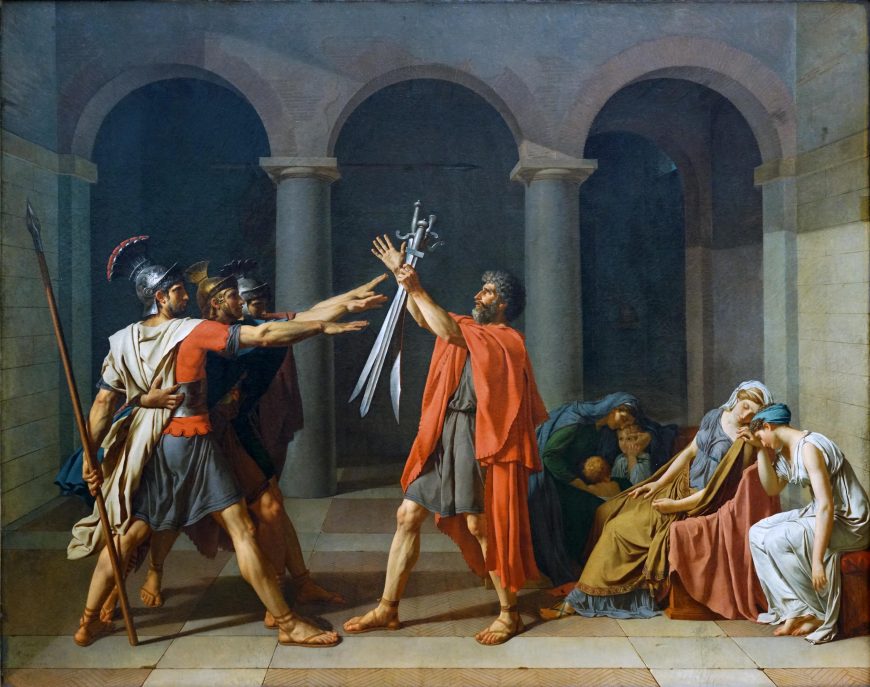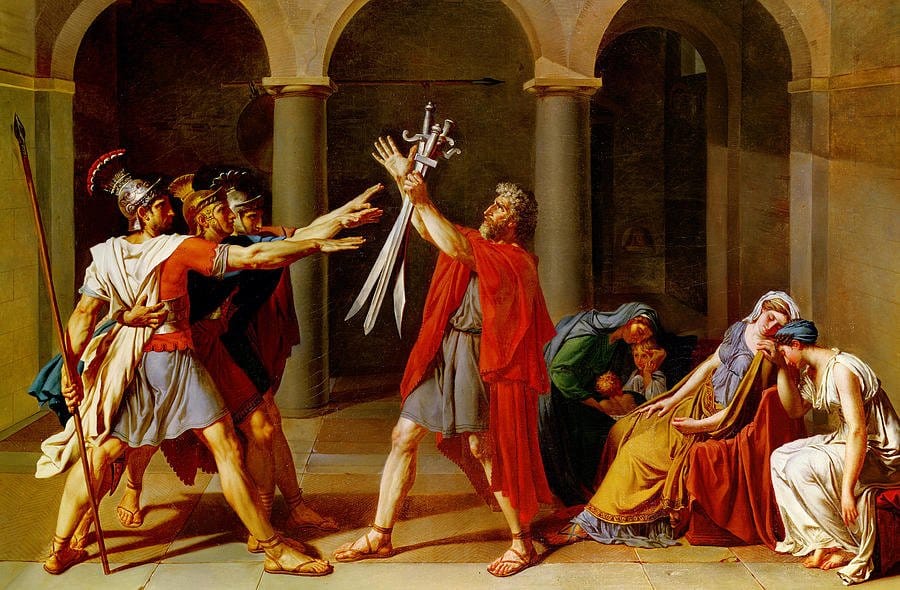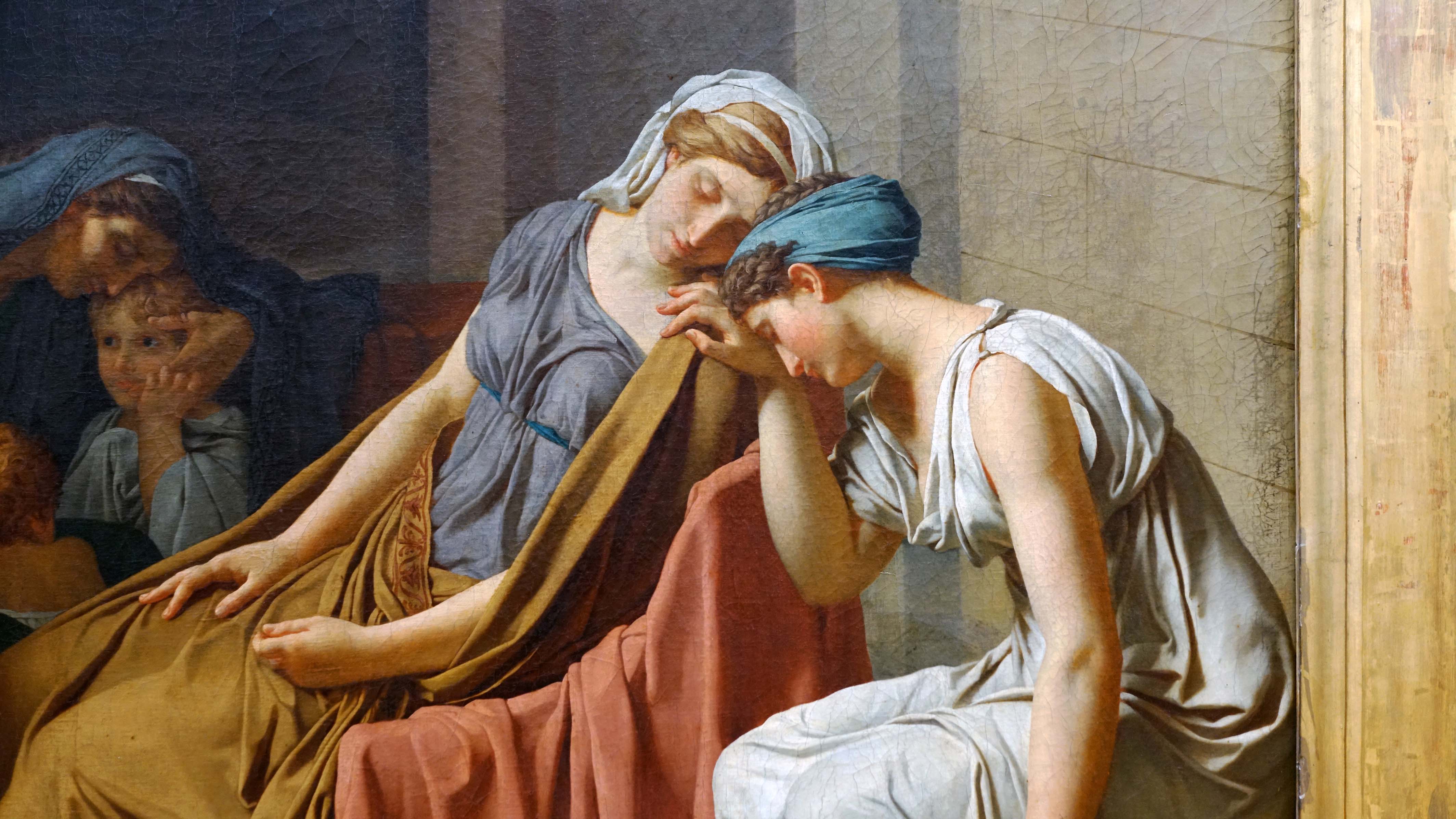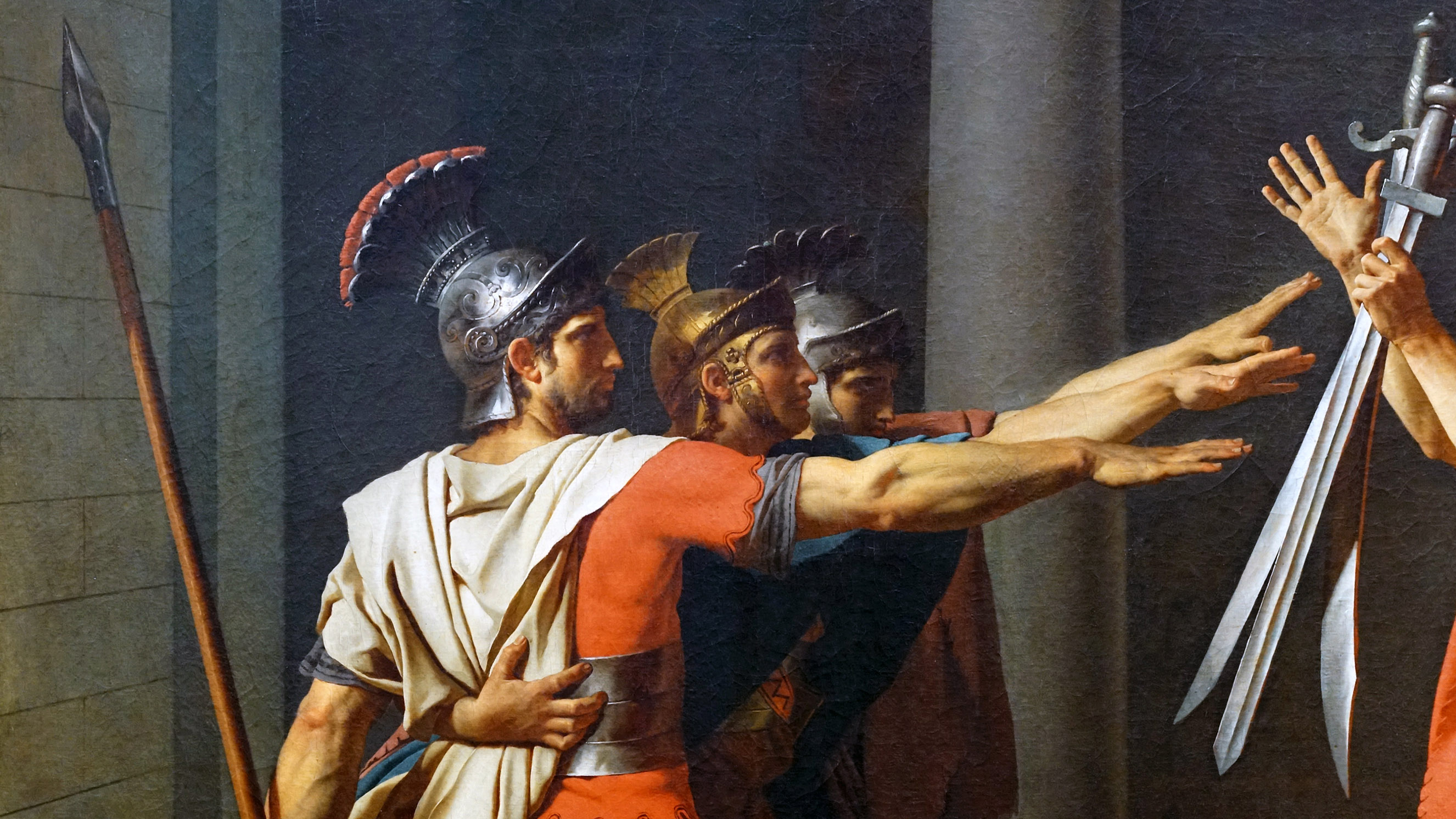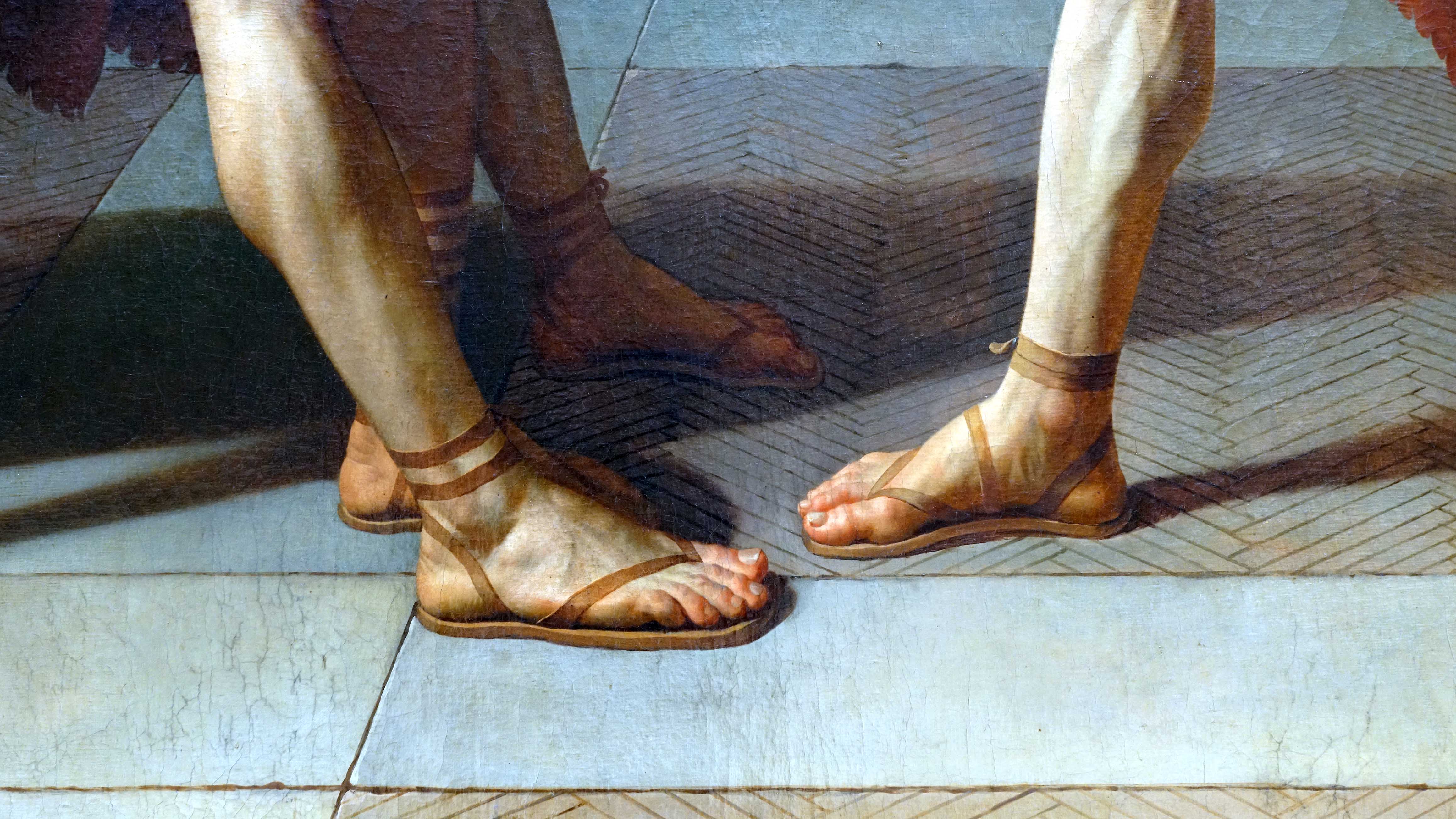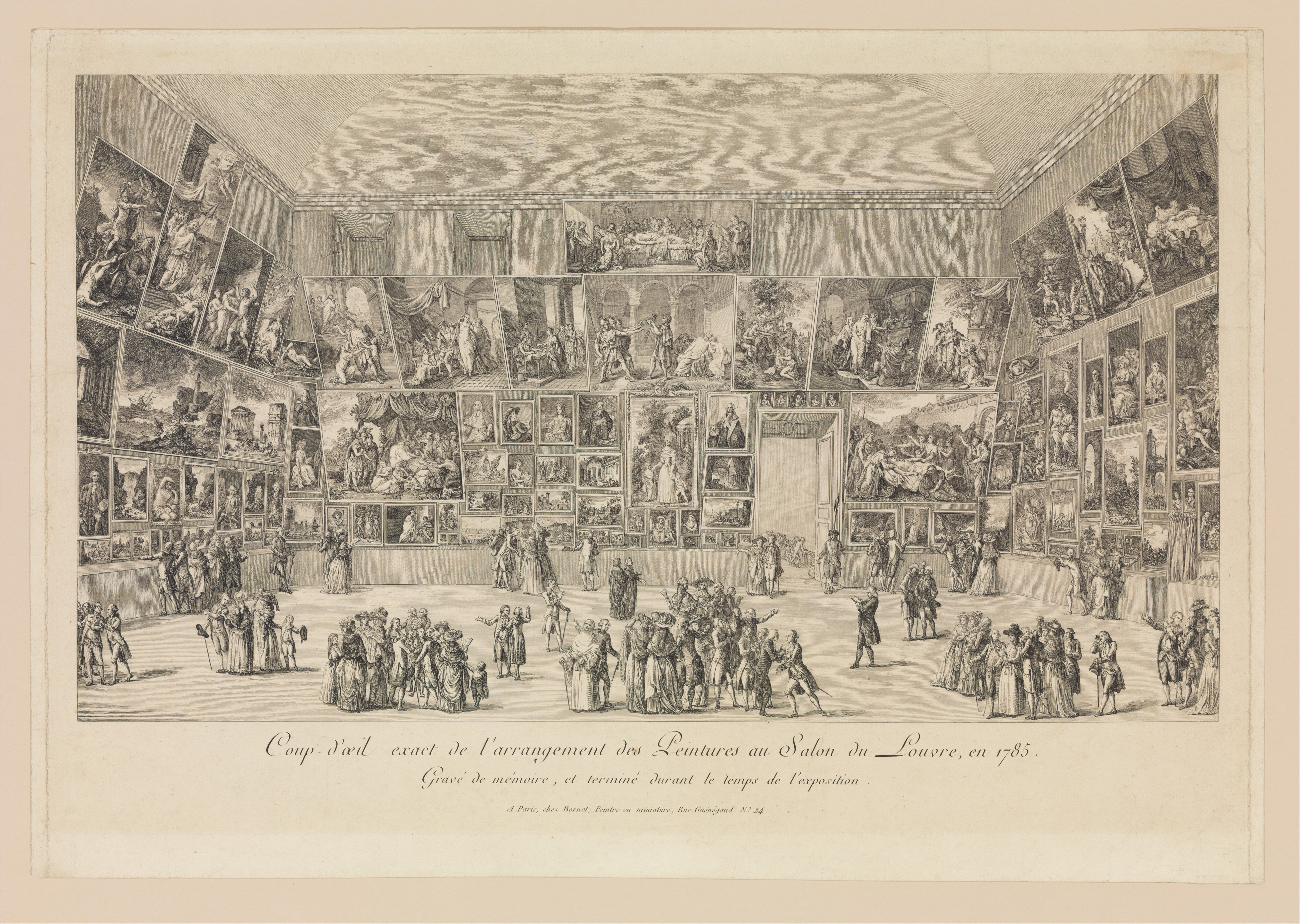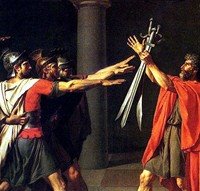Jacques Louis David The Oath Of The Horatii Louvre Paris 1785

The oath of horatii painting is currently located in musa de louvre in paris the same place its creation began.
Jacques louis david the oath of the horatii louvre paris 1785. Charles normand 1918 rf 4506. He even went ahead to add some other subjects in the painting to make it even more captivating and detailed. The manifesto of neoclassicism. Over the next decade david established himself as the leading exponent of neoclassical painting with masterpieces like oath of the horatii 1784 louvre museum paris death of socrates 1787 metropolitan museum of art nyc and the highly political lictors bring to brutus the bodies of his sons 1789 louvre museum paris.
Jacques louis david knew exactly how to achieve a result like no other. He presented the finished canvas in his studio in rome in 1785 then at the paris salon later that year on both occasions to acclaim. It was the oath of the horatii. Le serment des horaces is a large painting by the french artist jacques louis david painted in 1784 and now on display in the louvre in paris.
It became one of the finest paintings done in the neoclassical style in france and one of the defining images from the years before and during the french revolution. Black chalk on paper. Due to their fragility works on paper are not on permanent display in the museum. The oath of the horatii is the first masterpiece of a new style breaking with the.
It made him famous on a global scale and enabled him to take on students. David returned to rome where he could draw inspiration from ancient art for this painting. Jacques louis david paris 1748 brussels 1825 study for the oath of the horatii. The oath of the horatii 1784 oil on canvas 330 x 425 cm musée du louvre paris.
The painting immediately became a huge success with critics and the public and remains one of the best known paintings in the neoclassical style. The end result is a finer and detailed painting. David finished oath of the horatii in his studio in rome and showed it there and at the paris salon in 1785. It depicts a scene from a roman legend about a seventh century bc dispute.




